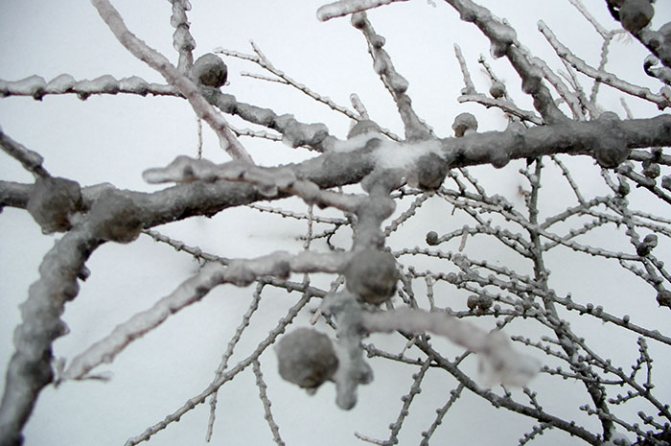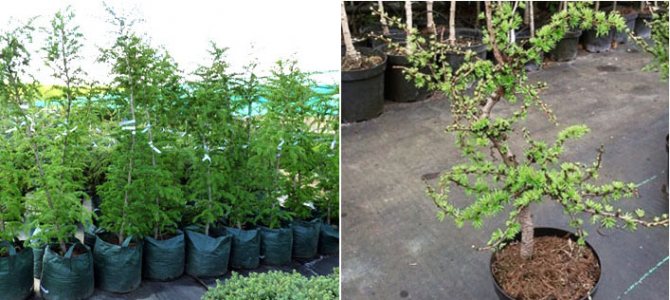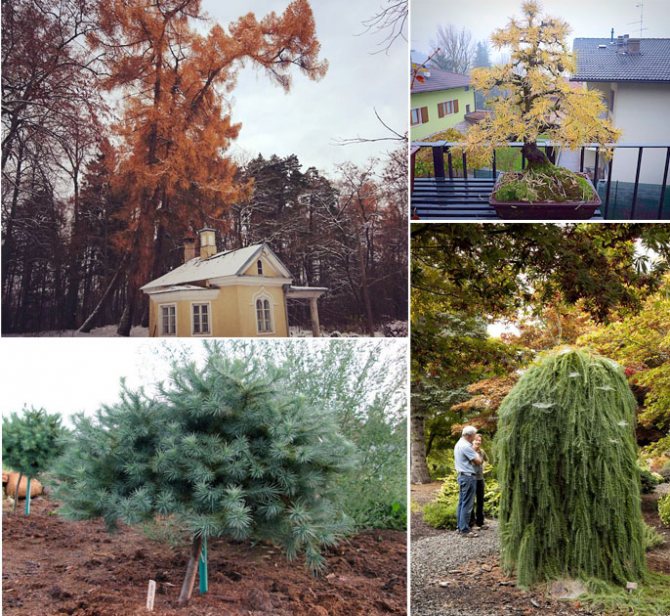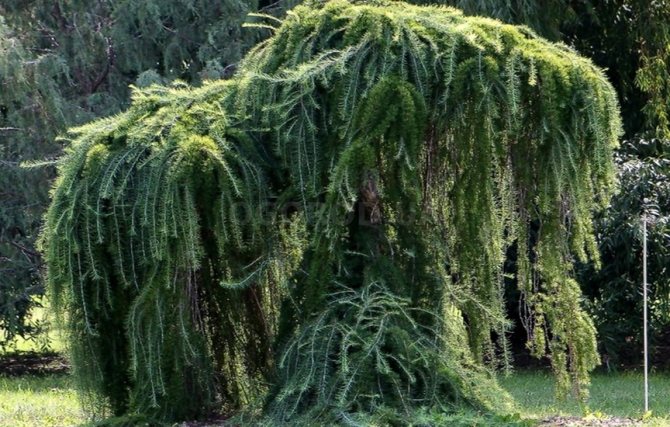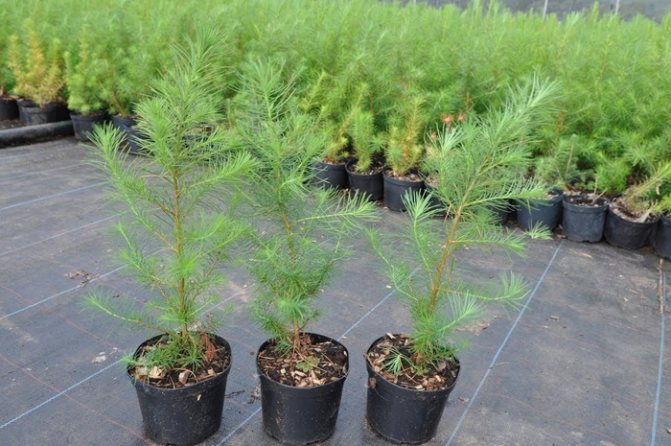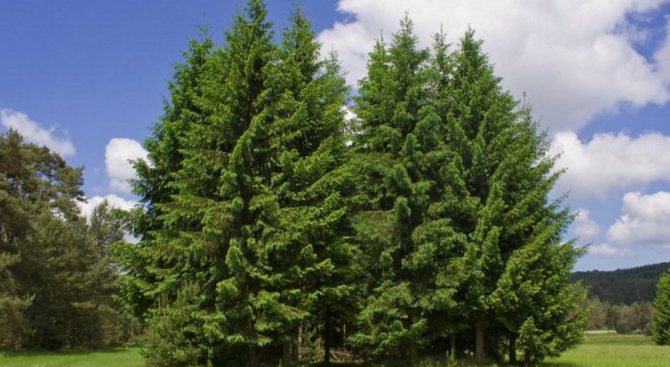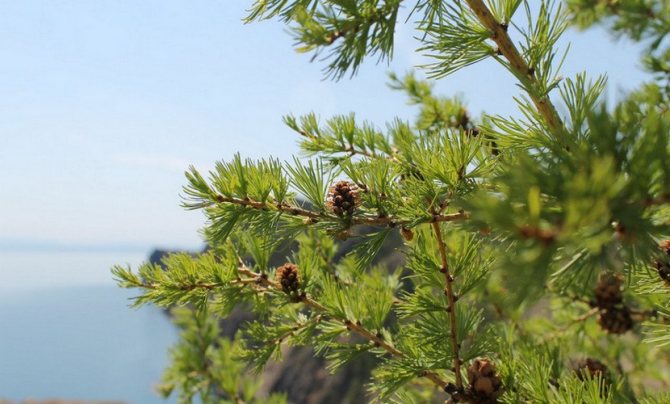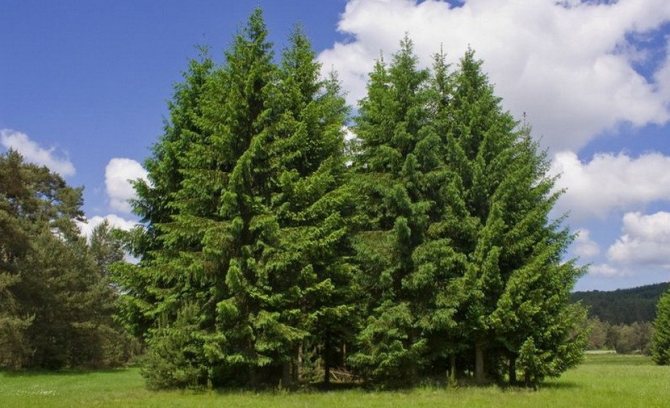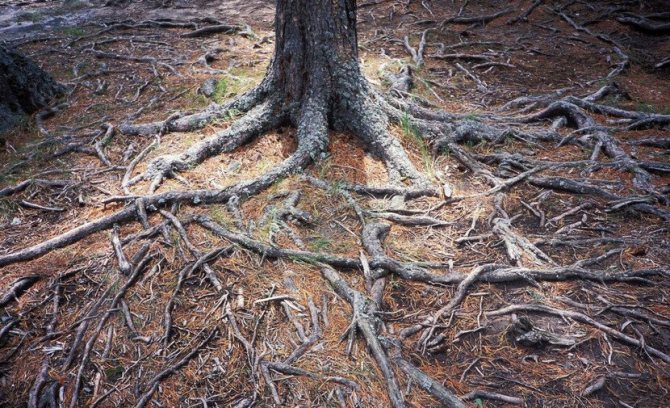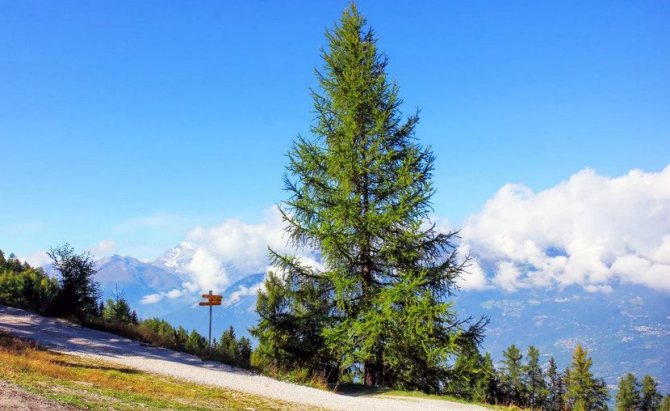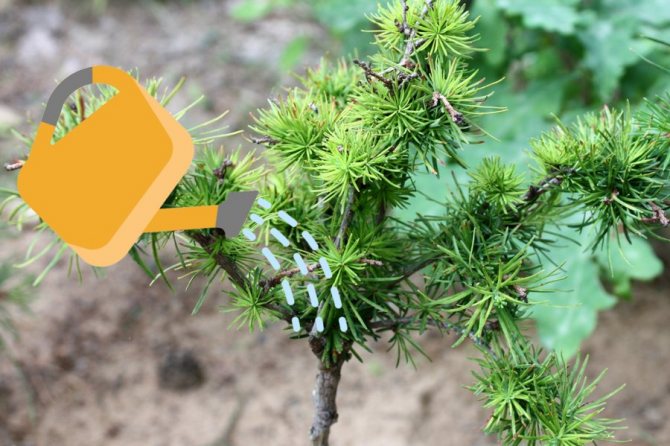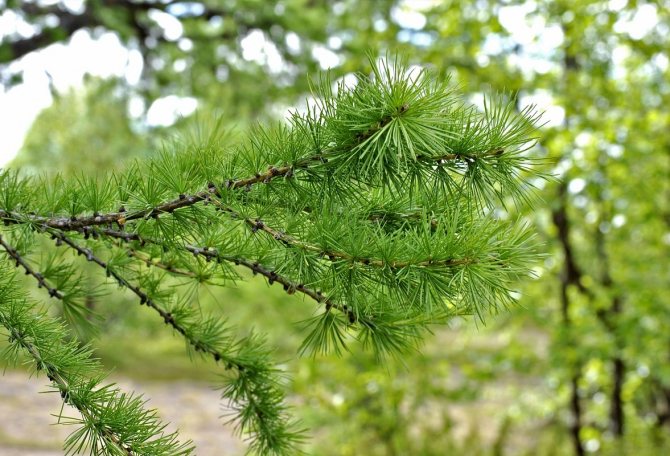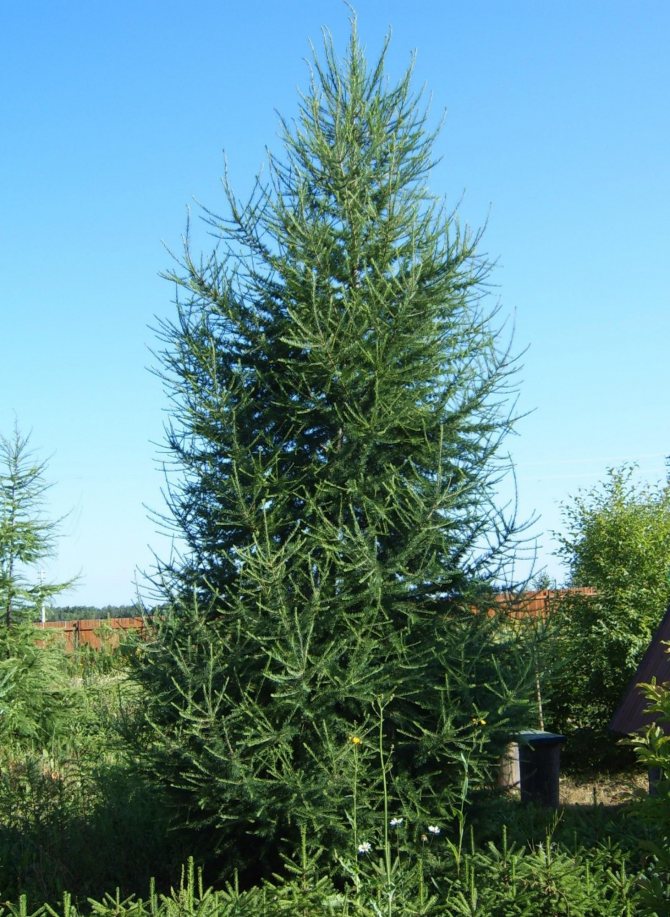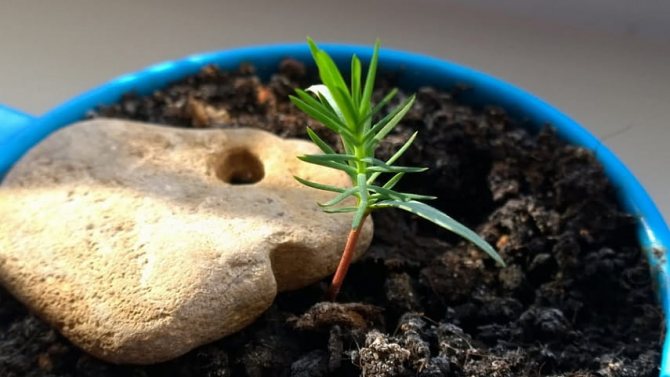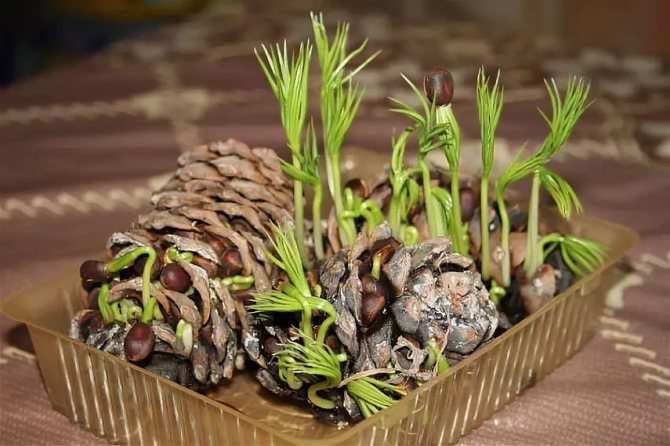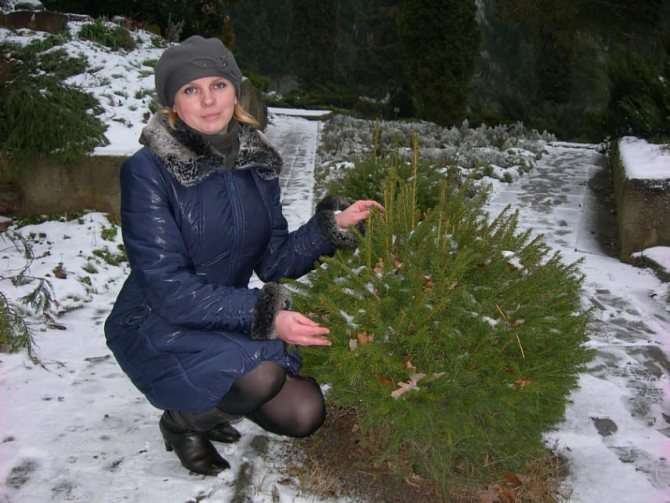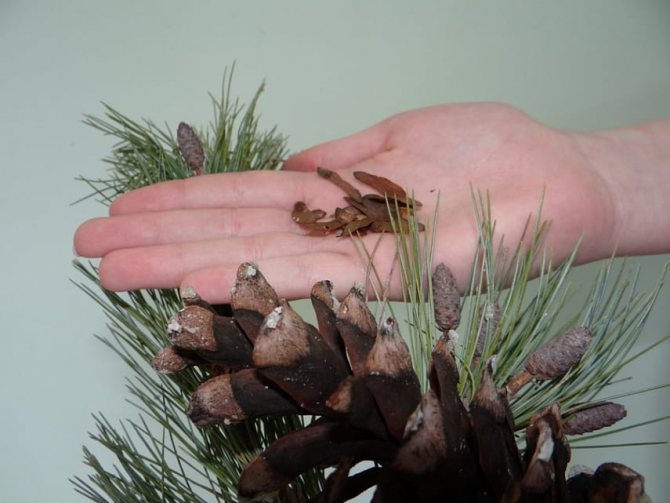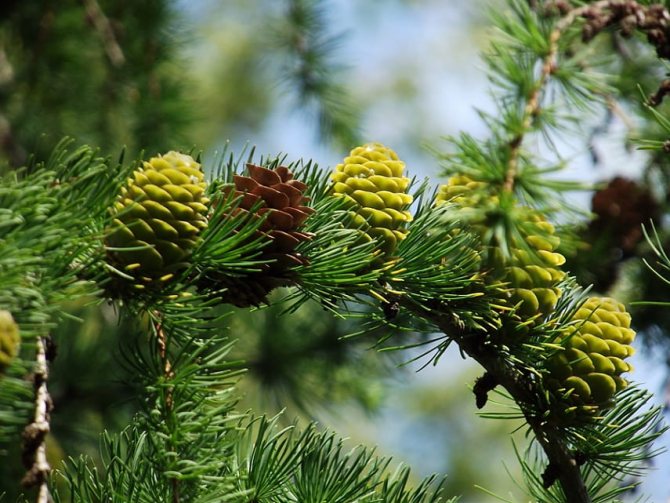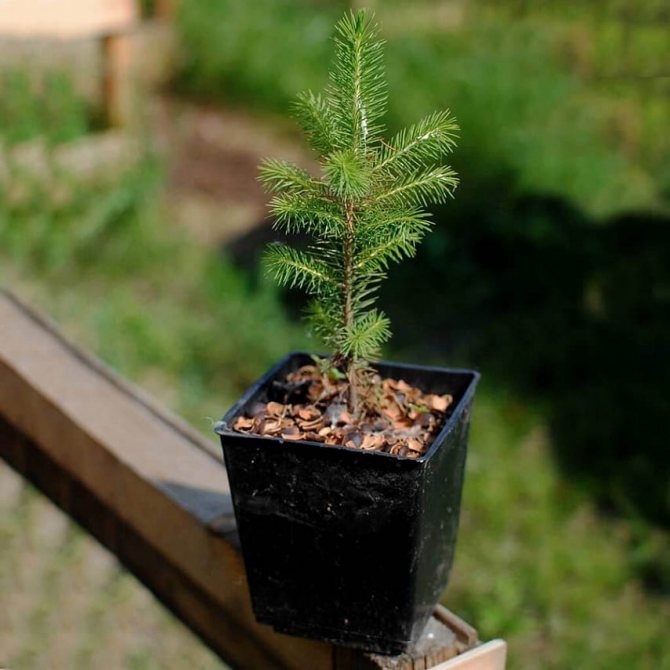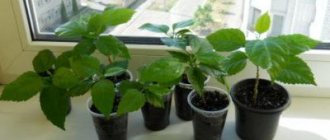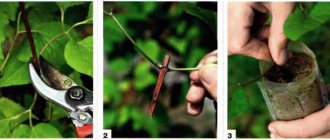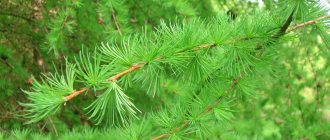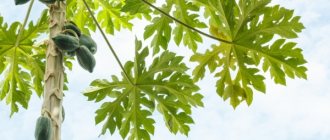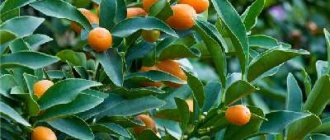Larch will decorate any site. We can grow this beautiful deciduous coniferous tree ourselves from seeds, rather than buying its seedlings from garden centers. Autumn is the best time to harvest seeds. Some species are harder to propagate by seed. their cones do not open well and give up seeds reluctantly, and the germination rate is low.
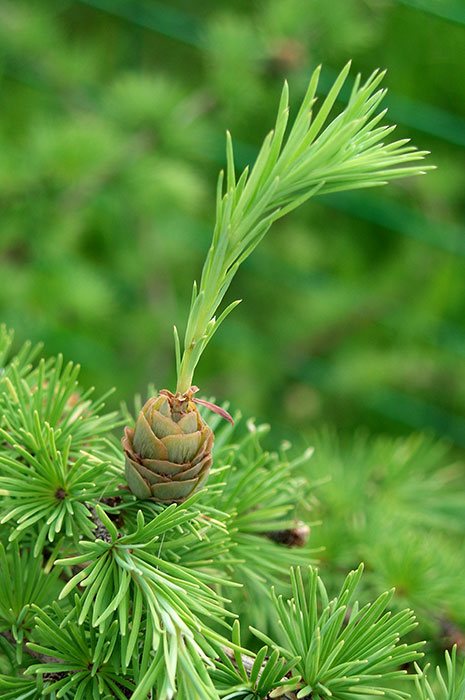
Many green cones of my larch have such a tuft
General characteristics of larch
The Northern Hemisphere has the largest number of these large-scale plants. The genus of larch has already presented the world with about two dozen species. As for the age of the plants, one tree can grow for more than five hundred years. Larch has excellent characteristics, it is strong, durable and resistant. Thanks to this, wood is used in shipbuilding, for the construction of many underwater vehicles, for creating furniture and parquet.
The needles of the tree can be used to obtain oil. The bark is suitable for resin production. It is possible that after describing its characteristics, many will want to grow larch in their country house.
Pay attention! There are two types of larch, which are protected by law. These include Polish and Olginsky larch.
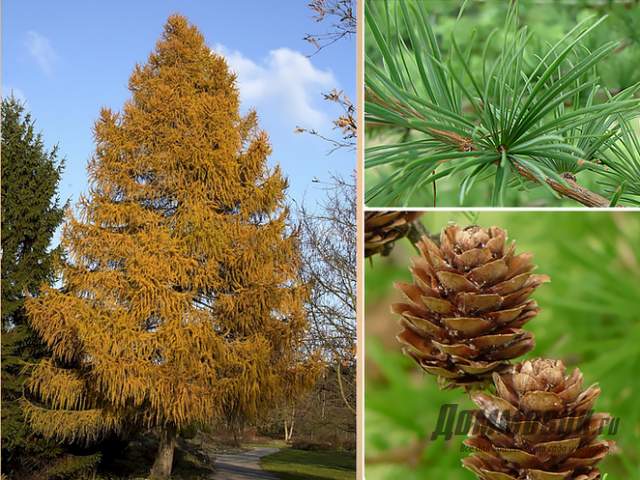

Getting seed
All types of larch are monoecious plants that form cones with seeds that ripen in the year of flowering. Therefore, both decorative and wild-growing species can be grown from seeds at home.


Seed collection
Larch cones ripen by the end of summer - early autumn, open only in winter, after which they remain hanging on the branches. You can collect them from trees growing in parks, squares, gardens.
To obtain seeds, select only fresh buds, whose scales are tightly pressed, they have a lighter shade than old ones. The collection must be completed before the seeds begin to fall out.
Seed preparation
To make the bumps open, place them in a cardboard box or linen bag, place in a warm place, for example, next to a battery. After they dry and the scales open, remove the seeds and pack them in paper bags.
Cull before use. Dip the seeds into a container of water, leave for 1-2 days. Viable seeds will settle to the bottom, empty ones will float up.
Note! It is advisable to treat the selected seed material with potassium permanganate, hydrogen peroxide or fungicide preparations.
For this, the seeds are placed in a solution for 2 hours, then washed with clean water.
Buying a larch seedling
Larch can be grown in two ways: seedlings and seeds. The simplest is seedlings. They should be around 3-4 years old. It is better to buy plants in special containers, since you can plant larch together with the soil in which it grew. Thus, the seedling will take root in you much faster and better. Pay special attention to the tips of the needles, they should not be soggy. Also look at the branches, they should bend.
Note! When you decide to buy larch, then go not to expensive and popular supermarkets, but to simple garden nurseries, where you are likely to buy a healthy and strong tree.
But it is not always easy to buy larch. It's just that a seedling can not be found in every garden store.That is why it is possible to take not a seedling for planting, but seeds. They are harvested with their own hands from cones in the fall, or they are bought in special stores.
Until they are planted in the ground, the seeds are stored in paper. They retain their germination capacity for about 3 years.
Coniferous plant
Larch is a unique coniferous tree that grows without needles in winter. The young larch has a clear cone crown, while the adult plant has a wide open crown. If the tree has enough space, then the crown will be spreading, but in cramped conditions it will rise high and narrow. Male spikelets are round, bullet-shaped, yellow in color, while female cones are bright pink or green.
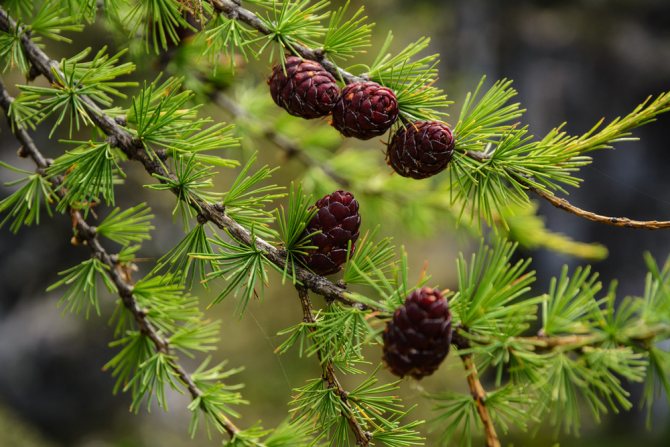

The needles fall off in the fall, they are tender, while in the spring the needles take on a light green hue, and turn yellow in the fall.
The length of the needles reaches 15–45 mm (it all depends on the type of tree). Cones ripen in the first months of spring, and the seeds from them spill out in early spring or in the summer of the following year, while empty cones do not leave the tree for many years. Seeds remain viable for 12-24 months, sometimes up to 4 years. I must say that the seeds that have fallen from lonely plants hardly germinate.
The bark of the trunk can have a dark or light shade, it all depends on the variety. Where does larch grow? The area of growth of larch spreads from the mixed forests of Europe, and up to the Carpathians on the eastern side. In our country, the tree can be found in the Far Eastern or Siberian territory, also in the middle lane. Larch is very fond of light and unpretentious to the soil. Larch can be seen on mossy swampy places, on dry or wet soils, as well as in permafrost conditions. A good place for larch is a moist soil with a drainage layer. What is the difference between larch and pine?
The distinguishing features are as follows:
- Larch falls for the winter. Pine is an evergreen tree that can change the color of the needles depending on the season. 2
- ... Larch needles are tender, 15–45 mm long, while they are located on the shoots in a spiral and are collected in bunches. The length of pine needles is about 50 mm, it is located along the entire trunk spirally and collected in bunches of 2 pieces.
- The thickest trunk, the diameter of which is up to 1.8 meters in larch. The pine tree has a thinner trunk. Larch wood is white, it belongs to expensive species, furniture is made of it, walls and ceilings are sheathed.
- The crown of the larch is not as dense and fluffy as that of the pine.
- The life period of larch is up to 600 years, and of pine up to 350 years.
- The bark is practically the same.
- Larch cones are graceful, rounded, and they are covered with velvet hairs. In winter, it is the cones that adorn the plant. Pine cones are a classic.
At first glance, many may think that there is a spruce or pine in front of them, but looking closely, you can understand what kind of plant is really in front of your eyes.
How to choose a site for larch
Take this with great responsibility, because this coniferous tree cannot grow normally in the shade. It needs a sunny area.
Note! Of the twenty species of larch, only one can grow in the shade - this is the Japanese species.
Maybe this: for a long time you dreamed of growing larch on the site, but there is no room for it in the country house. What to do? You can plant a small copy of it in the garden. This is done by trimming. It's good that this coniferous tree tolerates this procedure without any problems and quickly returns to normal after it. It is for this reason that you should familiarize yourself with the basic cutting techniques before planting larch in the garden. It is possible that knowledge of the art of bonsai will come in handy. You should also not give up the cultivation of decorative species of larch on the site.


Benefits
Unlike pine or spruce, larch sheds needles.However, it has its own advantages over evergreen conifers:
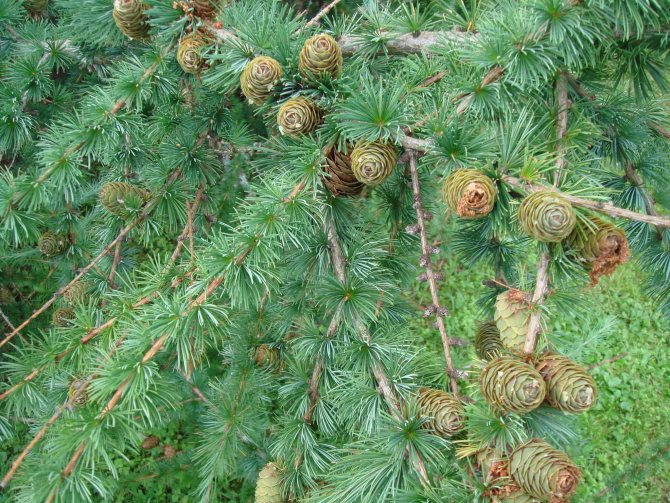

Larch branches
- Rapid growth. Under favorable conditions, the annual growth can be 1 meter.
- Resistance to frost - including spring frost.
- It grows well even in problem areas. For example, with a high groundwater table, swampy areas, places of stagnant melt water.
- Not afraid of drafts.
- A large selection of varieties and hybrids allows you to choose a plant for any landscape design: park, arboretum, container.
- Compared to other conifers, it is much less likely to be affected by diseases.
How to plant larch from a seedling
The deepening for two to three-year-old larch is prepared in advance. Its dimensions are standard: 0.5 m by 0.5 m. If the tree is bought in a container, then the pit is made 2 times larger. Larch is very carefully placed in it so that the root system is not damaged. From above, the roots are covered with turf soil with peat (1 part: 1 part). Make sure that the root collar remains on the surface of the soil. If the ground is heavy, sand can be added to it. Pay special attention to creating high-quality drainage. After planting the seedling, the tree is watered abundantly with water (at least two buckets). You can add humus or compost. Do not forget that newly planted seedlings should be hidden from sunlight and frost.
Note! When planting seedlings, be extremely careful with the apical shoots. You cannot touch them. Even a slight touch can twist the trunk of a larch. It is impossible to fix this, and the plant will not grow correctly.
How to plant larch from seeds
The most difficult and important stage in the cultivation of larch is considered to be its planting. In order for the seed to sprout faster, it should be prostrated in advance. To do this, 30 days before planting the seeds, they are soaked in room water for two days. Bad seeds will begin to emerge on the surface of the water - they are thrown away. After such selection of good seeds, they are lowered into a container and mixed with wet sand (1 part seeds + 3 parts sand). The container is placed in the refrigerator on the bottom shelf. And they keep it in it until the seeds are planted directly into the ground.
Sowing is carried out directly in the middle or late spring. The seed should be deepened 10 mm into the ground. The distance between the rows is approximately 100 mm. Sprinkle the seed on top with a mixture of sand (3 parts) and peat (1 part). Form mulch. As soon as the sprouts began to appear, the mulch is thrown away. Taking care of them is not difficult. The sprouts should be regularly watered and treated with various methods for diseases. Also, do not forget about weeding and thinning. Planting for this coniferous tree is a long process, but then it grows very quickly. With good care, the tree begins to bear fruit in the tenth year after planting.


Planting and growing seeds at home
To plant germinated larch seeds you will need:
- peat;
- sand;
- crushed chalk;
- sawdust;
- cups or boxes;
- drainage (expanded clay, pebbles, etc.);
- covering material.
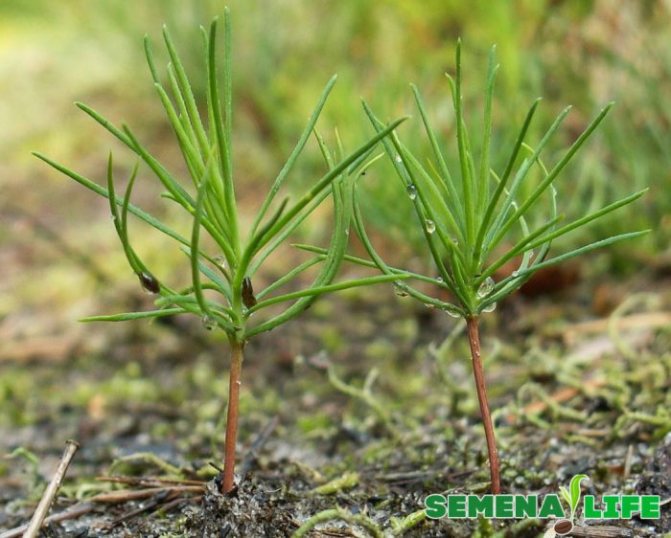

Having picked up suitable containers for planting, it is necessary to prepare the soil mixture. To do this, you need to mix 10 kilograms of peat, 40 grams of crushed chalk and 3 kilograms of sand. At the bottom of the container for future seedlings, we place drainage in the form of expanded clay or small stones. We fill the container with this soil and moisten it. Then we make a depression in the soil mixture and place a seed there; cover it with a layer of peat and sawdust. After that, the seeds need to be provided with greenhouse conditions - placed in heat and covered with a covering material (film or glass).
During this period, the soil should be regularly moistened and disinfected.
Watering should be grassroots (pour water into the pan) and do not need to be done too often.As soon as the shoots appear, you need to provide them with an additional amount of light and remove the covering material. It is better if containers with seedlings are on the balcony.
Professional gardeners recommend regular treatment of the soil and seedlings with fungicidal compounds. This is due to the fact that coniferous trees are more susceptible to fungal diseases, therefore, they require enhanced protection. In addition, a number of experts recommend holding larch seeds in hydrogen peroxide for a couple of hours before planting. This will disinfect them and minimize the risk of fungal infections.
How to care for larch
When grown, this coniferous plant does not really need care. It consists in the same rules as with other plants: the tree is watered, the soil is loosened and weeds are removed around the trunk circle.
Larch does not tolerate drought. Therefore, be sure to water it. This is especially true for young plants (up to about two years old). One adult tree needs to be poured about 20 liters of water 2 times in 7 days.
Note! Many gardeners recommend watering the larch tree with water that was used to wash the mushrooms. From this, the tree grows much faster and becomes stronger.
Loosening and weeding is necessary only for young trees. Adult larch trees can do without these activities. If you want to give the plant a more sophisticated or unusual look, you can try pruning it. Just also remember that pruning can only be done on young trees.
Further care and transplant
- At the stage of germination and growth of seedlings, it is very important to provide good lighting, but in extreme heat it is advisable to shade their aggressive sun.
- When growing a house, it is advisable to take the plants out onto a balcony or loggia.
- At home, water infrequently and only from the pallet to avoid waterlogging. If the air is too dry, make a mini greenhouse, but provide ventilation to avoid mold.
- When growing larch in your garden bed, keep the soil moist at all times, but avoid stagnant moisture. When there is a threat of frost, plants are covered with agro fiber.
- Remove all weeds in a timely manner - even ordinary grass can disrupt the growth of the plant.
- To prevent the development of fungal diseases, seedlings are treated with fungicidal preparations.
During the first season, the trees grow up to 25-35 cm and they can be planted in a permanent place. The best time for this is late August - early September, or early spring, before bud break. The trunk circle of larches transplanted in autumn is carefully covered for winter.
If you left your seedlings to winter at home, move them to a cold place (down to -5º C) and reduce watering to a minimum. Be prepared for the needles to turn yellow and fall off for the winter.
What fertilizers do larch need
After planting the larch, you can make complex fertilizing. An excellent option would be "Kemira wagon", make 20 grams per square meter. Fertilizers with potassium and magnesium also have a good effect on the growth and development of the plant. In summer, the tree is watered with a urea solution (10 grams of the product per 10 liters of water). After that, you should observe the tree, if it grows normally, then you can wait with top dressing, if its appearance deteriorates slightly, then use top dressing for conifers.
How soil mulching is carried out
The ground is covered with mulch for about 5 centimeters after planting the seedling or seeds. Peat, straw or sawdust can be used as mulch. As for severe frosts, the plant tolerates them well and does not need additional protection. Of course, this does not apply to young seedlings. They are wrapped in warm sacking for the winter. Some branches need a garter or support, as they break off quickly under the weight of the snow.
skrinshot_03-03-2018_204906.png


The use of larch in landscape design
The area of use of the tree is significant, since nature gave us not only large larch trees, but also miniature decorative varieties of it. The plant can be planted in group or single plantings. It also looks great as a hedge or the main plant on an alpine slide. Larch is not at enmity with other trees and perfectly tolerates the neighborhood with them.
Excellent neighbors for the plant will be: linden, birch, maple, barberry, juniper or other conifers. On a trunk, a coniferous tree also looks good. Often decorative varieties are used for this growing method, their crowns can be different. Such larch trees on the trunk create an impeccable look near the recreation areas. Dwarf larch trees have found their use in Japanese-style gardens.
Things to Remember
- To grow larch yourself, you need to properly collect, prepare and germinate seeds, plant seedlings and care for young plants.
- In landscape design, three types of larch are most often used.: Siberian, European and Japanese.
- The most popular varieties of larch are: larch Blue Dwarf, Diana, Stiff Weeper, Wolterdingen.
- For a successful transplant of an adult plant necessary prepare its root system and crown in advance.
- Larch is affected by diseases and pests... To combat them, you need to apply pruning of affected branches, spraying the tree, disinfecting the soil around the trunk.
Larch diseases
Just like all other conifers, larch has a number of ailments and enemies. The first place is occupied by larch cancer. It completely destroys the entire tree. Shiny spots begin to appear on the trunk, resinous stands out. It is almost impossible to cure a tree from this ailment. The second place is occupied by fusarium. Seedlings can pick it up. To prevent this, gardeners treat the soil with a solution of potassium permanganate or products containing copper.
Not a good disease and shute for larch. The main symptoms: the appearance of red spots on the needles in late spring. In the summer, she begins to fall off. This disease can also be prevented by using Bordeaux liquid or colloidal sulfur solution. The most dangerous pests: tinder fungus, root sponge, cap moth, brown aphid and greenish hermes, conifers, pine cone moth caterpillars.
Larch is an excellent tree, but with a temperament. If you can catch all her whims, then she will delight you with her gorgeous crown for many years.

